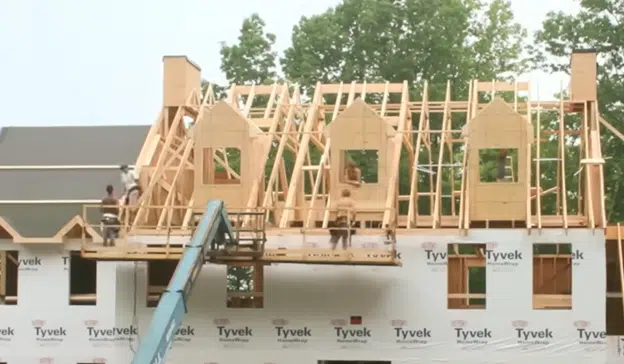
One thing that President Donald Trump has proven since taking office is that to secure the border, all it takes is a president with the political will to do what is necessary, with encounters on the southwest border in March down to 11,017, a 94 percent decrease from 189,359 encounters in March 2024, according to data compiled by U.S. Customs and Border Protection. Similarly, in February there were just 11,709 such encounters.
The dramatic change came as Trump sealed the border immediately, declaring a national emergency, deploying the military to the border, resuming construction of the border wall, using tariffs and coordinating with Mexico to secure their side of the border and so forth — all executive actions enforcing existing laws that Trump was able to perform, with the results immediately visible.
But President Trump ran on more than just preventing further illegal immigration, he also promised to utilize mass deportations to address an estimated 15 million to 20 million illegal aliens who snuck into the United States. A Jan. 2 to Jan. 10 poll by the New York Times-Ipsos found 55 percent of Americans support removing all illegal aliens, including 59 percent of men and 51 percent of women and support among all age demographics.
But has Congress ever provided an adequate mechanism for mass deportations?
One issue appears to center around the 1996 Illegal Immigration Reform and Immigrant Responsibility Act, which provides for “expedited removal of inadmissible arriving aliens”. These expedited removals — about 1.4 million performed since 2014 according to the Office of Immigration Statistics, or about 130,000 a year — were upheld by the Supreme Court in the 2020 case Department of Homeland Security v. Thuraissigiam.
Specifically, the court ruled that those being subjected to removals, who were recent arrivals, were not being denied due process, with Justice Alito stating, “While aliens who have established connections in this country have due process rights in deportation proceedings, the Court long ago held that Congress is entitled to set the conditions for an alien’s lawful entry into this country and that, as a result, an alien at the threshold of initial entry cannot claim any greater rights under the Due Process Clause… Respondent attempted to enter the country illegally and was apprehended just 25 yards from the border. He therefore has no entitlement to procedural rights other than those afforded by statute.”
But what about mass deportations for those who are not recent arrivals but snuck into the country years ago? Alito stated that “aliens who have established connections in this country have due process rights in deportation proceedings…” Alito’s due process position for those with “established connections in this country” almost certainly poses an obstacle to any attempts at mass deportation.
Alito also noted the law’s clear intent by noting the goal was to weed out bullshit asylum seekers, stating, “In 1996, when Congress enacted the Illegal Immigration Reform and Immigrant Responsibility Act (IIRIRA … it crafted a system for weeding out patently meritless claims and expeditiously removing the aliens making such claims from the country. It was Congress’s judgment that detaining all asylum seekers until the full-blown removal process is completed would place an unacceptable burden on our immigration system and that releasing them would present an undue risk that they would fail to appear for removal proceedings.”
Again, Alito stated that “Congress is entitled to set the conditions for an alien’s lawful entry into this country” and so if hearings can be denied and expedited removal initiated for those who snuck in for the past two years, why not four years or eight years? That could be an issue for Congress to address — if the courts will allow it.
At best, the current removal system using courts has been able to process, say, about 150,000 removals a year — of the 4 million removals since 2014, 1.5 million were not on an expedited basis. So, if the number is 20 million illegal aliens who need to be deported, that would take 133 years to remove everyone. Is that what Congress intended?
With millions upon millions of illegal immigrants having already been let in the door, clearly there is a crisis and emergency wherein, as Alito stated, “detaining all asylum seekers until the full-blown removal process is completed would place an unacceptable burden on our immigration system…” Is that what Congress intended?
Right now, the President is acting — for example, President Trump has invoked using the 1798 Alien Enemy Act for terrorist gang members although the Supreme Court recently blocked the use of that statute pending further hearing — but Congress could act too to expand the scope of expedited removals, something that was never addressed by the defeated 2024 Schumer-Lankford amnesty bill.
Congress has clear power to set the rules in Article I, Section 8 of the Constitution: “To establish an uniform Rule of Naturalization…”
The question might be if expedited removals are okay under the Fifth Amendment per the Supreme Court when Congress says so for recent arrivals, then they could attempt to expand the scope of expedited removals, perhaps in the upcoming budget, to deal with those who have been here longer. Then, if courts were to attempt to scuttle a clear act of Congress to address the current crisis with mass deportations as a constitutional matter — rendering any meaningful effort at removals impossible — then the country could have a big problem.
Robert Romano is the Executive Director of Americans for Limited Government.






